The Chapel of Trinity College, Oxford: A return to splendour
One of Oxford’s most admired interiors has been revived, as John Goodall reports.

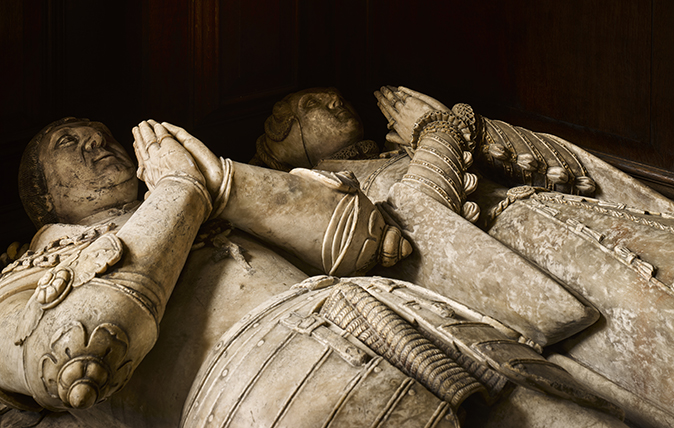
Writing in his diary on April 12, 1694, the Oxford antiquarian Anthony Wood noted that ‘Trinity college new chapel was consecrated for a pious use… The chapel door being opened, the bishop [of Oxford] entred, knelt downe, and said something; and then in the choir knelt again; and so to the altar…
'When service was done, Dr Thomas Sykes one of the senior fellows preached. Afterwards went to dinner in the hall, where the company was nobly entertained. The president built the outside, which cost him 17 hundred pounds; and the inside by benefactors.’
Wood, who knew Oxford and the university well, had watched the entire process of the chapel’s construction. Perhaps that explains why his entry merely states the extravagant cost of the new building.
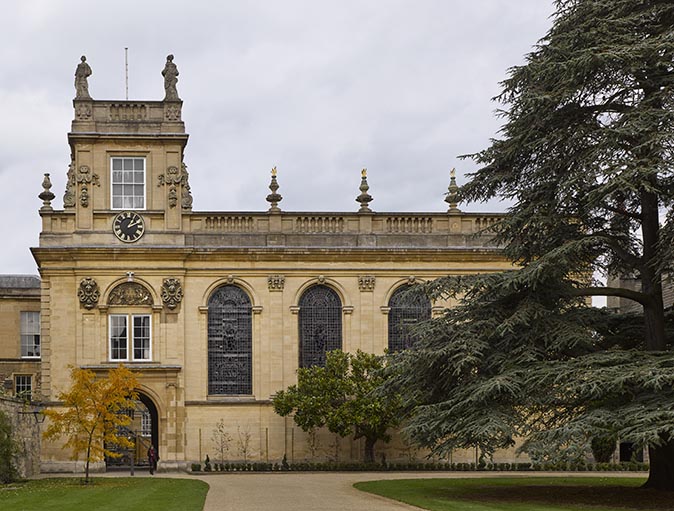
Other visitors marvelled at the new interior. Celia Fiennes, writing the following year, described it as ‘a Beautifull Magnifficent Structure. It’s Lofty and Curiously painted – the Rooffe and Sides ye history of Christ’s ascention a very ffine Carving of thin white wood just Like that at Windsor… The whole Chappel is Wanscoated with Walnut tree and the fine sweet wood... like Cedar and of a Reddish Coullr’.
The President who oversaw the construction of the chapel – and the main college gatehouse that stands like a tower immediately beside it – was an outstanding figure in the life of the 17th-century university. Ralph Bathurst first came to Trinity in 1634 and would remain closely associated with the life of the college for the next 70 years.
Trinity was the successor institution to Durham College, a medieval monastic foundation suppressed at the Reformation. It was established in the medieval collegiate buildings by Sir Thomas Pope in 1555.
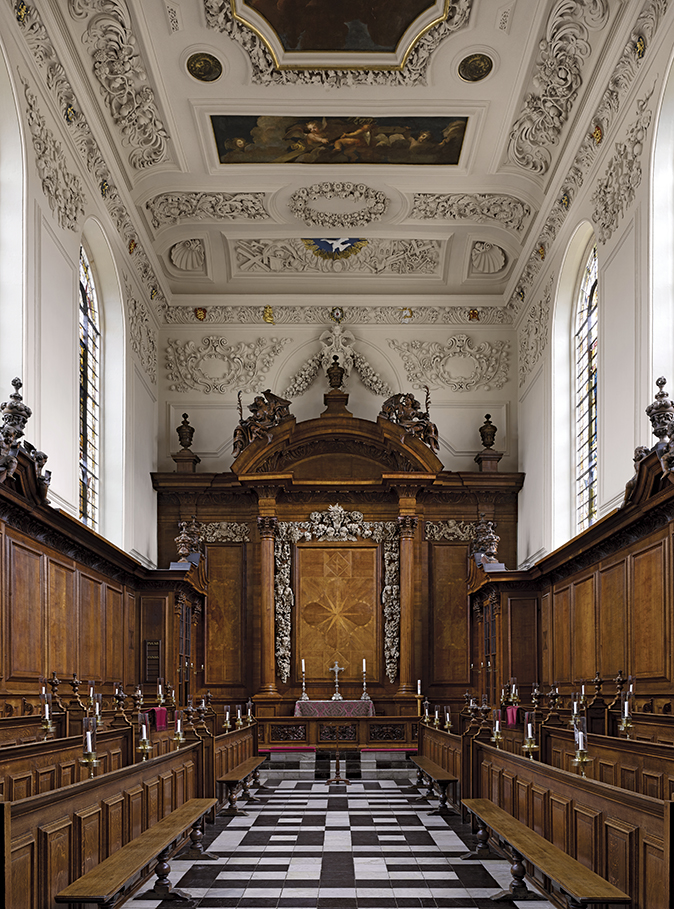
In 1644 Bathurst was ordained priest and then, during the Civil War, took up the study of medicine. Such were his interests in natural philosophy that he formed part of the founding circle of the Royal Society in 1662. In 1664, Bathurst became President of Trinity and took the opportunity of his office to marry Mary Tristram.
Exquisite houses, the beauty of Nature, and how to get the most from your life, straight to your inbox.
Bathurst immediately embarked upon architectural improvements at Trinity with the help of Sir Christopher Wren, another fellow of the Royal Society. That Bathurst was conscious of the architectural image of his college is implied by a curious anecdote he related to Wood in 1661.
Bathurst reported that Pope, the founder of the college, was a kleptomaniac who, ‘wheresoever he went a visiting his friends [would], steel one thing or other that he could lay his hand on, put in his pocket or under his gowne’. Making reference to this, a scholar of the college in the 1580s, Henry Cuffe, jested in company: ‘A pox! This is a poor beggerly College indeed: the plate our founder stole would build such another’. The joke cost him his fellowship.
More certainly, Bathurst was well-attuned to the complexities of fundraising and a letter of 1665 famously highlights the fact that he wanted Wren to design a ‘quadrangle’, because it was a project that benefactors would pay for. Through the intercession of the Duke of Devonshire in 1670, Bathurst additionally became Dean of Wells, a plum appointment.
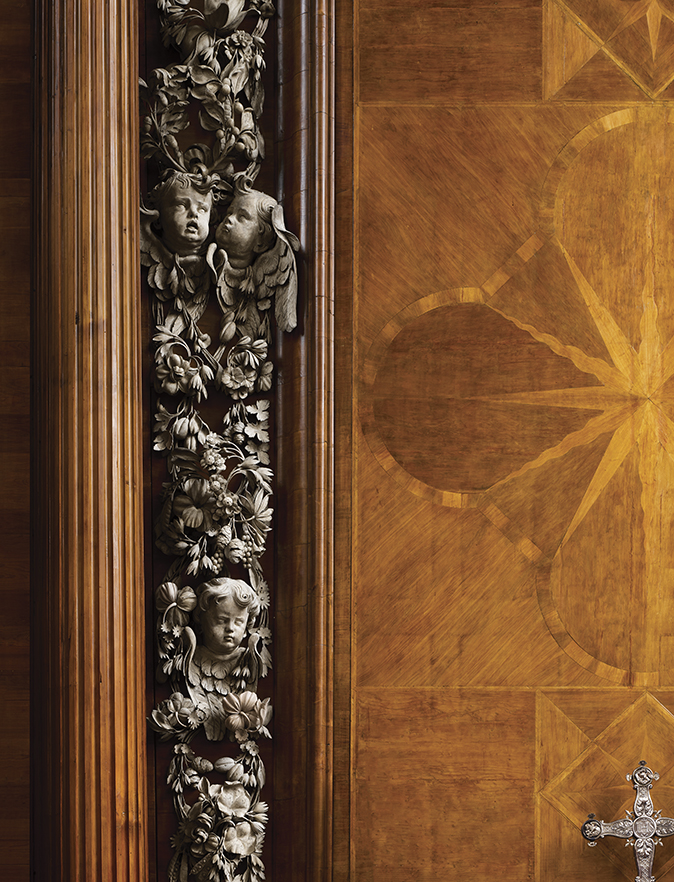
The redevelopment of Trinity continued by stages into the 1680s and ran concurrently with such other projects as the repair of the choir of the university church of St Mary, to which he contributed £300 as Vice Chancellor.
According to a biography by Thomas Warton published in 1761, Bathurst first laid down a deposit of £200 to begin a new college chapel in 1682. In his later fundraising letters, Bathurst asserted that the medieval chapel was ‘Homely enough, but of late growne very infirme and ruinous’. Certainly, it seems to have suffered particularly badly at the hands of iconoclasts in the Civil War, the interior having remained apparently unaltered from its Catholic re-foundation in 1555.
It’s possible that the ‘Glorious Revolution’ of 1688 played a decisive role in making the chapel a reality. Bathurst was a sufficiently adept political survivor for the temper of his Protestantism to be difficult to divine. Yet in creating and furnishing a chapel at this moment, he was making a very public statement of his religious conformity in a manner calculated to win the approval of the new regime (and his patron, the Duke of Devonshire). Many donors must have understood that too.
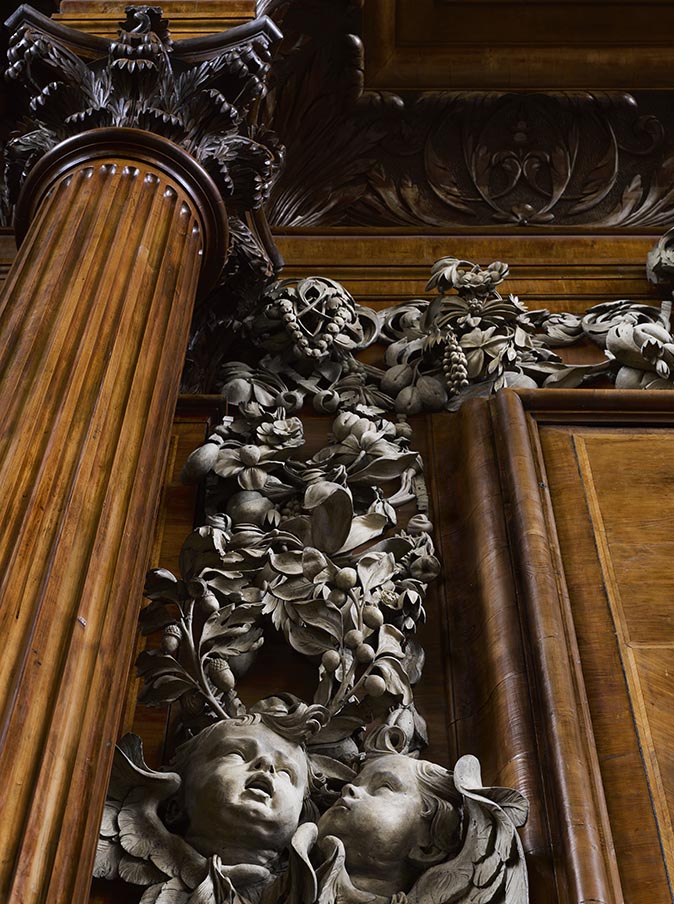
Work began to the demolition of the old chapel and gatehouse beside it in 1691. On June 15 Bartholomew Peisley, the local master mason overseeing the work, invited his drinking companion Wood to explore the crypt of the old building. The next morning, the workmen opened the vault, shovelling debris off the steps to allow the two men in with candles. They found three bodies, one of which Wood presumed was Lady Elizabeth, widow of the college founder, Pope.
The foundation stone of the new building was laid on July 9, by which time a design for the building must have been agreed. In one letter Bathurst refers to Dean Aldrich – the arbiter of architectural taste in Oxford – ‘and other able judges in architecture; have thought it most advisable to begin our worke wholly upon New Foundations; thereby to enlarge it both in Length and Breadth; and withal to make it range bettere [with the] Quadrangle’. This discussion hints at the probable nature of the design process: rather than employing an architect, Bathurst himself devised the building and developed his ideas in discussion with those whose expertise he valued.
By August 10, 1691 these designs had been worked up as a model. This was used as the basis for a competitive building tender between two builders. Peisley, who had demolished the medieval building, offered a much lower price for the work and was duly contracted.
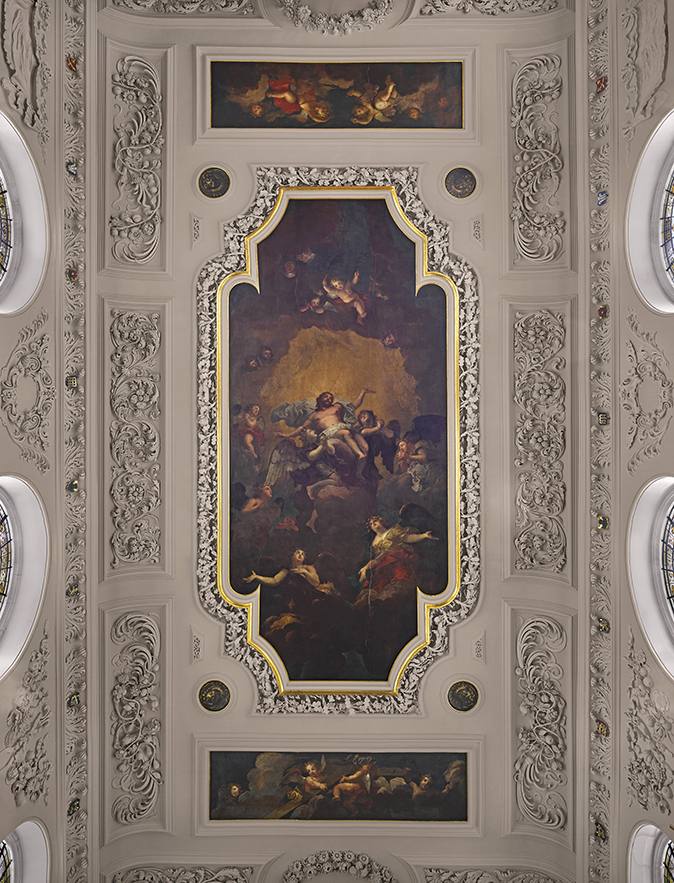
Bathurst put up the money for the architectural shell of the building himself, but in the winter of 1691 he began fundraising for its fittings. Several of his letters are transcribed, along with key documents relating to the building, in a recent book The Chapel of Trinity College Oxford by Martin Kemp (2013). An illustration of the proposed building by the Dutch artist Michael Burghers was sent out with the begging letters. This engraving, which differs in some particulars from the completed building, was also sent to Bathurst’s former architect, Wren. Their correspondence makes it clear that Wren had not as yet been involved in the project and further underlines the discursive character of the design process.
On February 25, 1692 Bathurst wrote to press Wren for his comments on the design and, in particular, the pinnacles, which were ‘superadded to our first Draught, so I must confesse I would be well content to have omitted with your Approbation’.
In his reply, dated March 2, Wren politely observes that ‘your work is too far advanced to admit of any advice’. He goes on tactfully to correct what he must have regarded as three woeful inadequacies of the ‘printed design’: the design of the cornice (that proposed looks bizarre), the structural support of the gate tower and the design of the parapet.
In this last regard, Wren dismisses the pinnacles, which he comments ‘are far too slender’, and effectively redesigns the upper section of the building, aligning the parapet divisions with the half-columns that rise between each window. Wren’s suggestions were incorporated on a completely updated version of the original engraving (confusingly dated 1691, but necessarily made the following year).
This revised engraving, which shows the chapel as built (almost), also records a thorough reworking of the chapel interior that must have occurred at the same time. As part of this change, the furnishings were made taller, the decorative plasterwork extended further down the walls and the ceiling reconfigured with a central painting of the Ascension by the Huguenot artist Pierre Berchet.
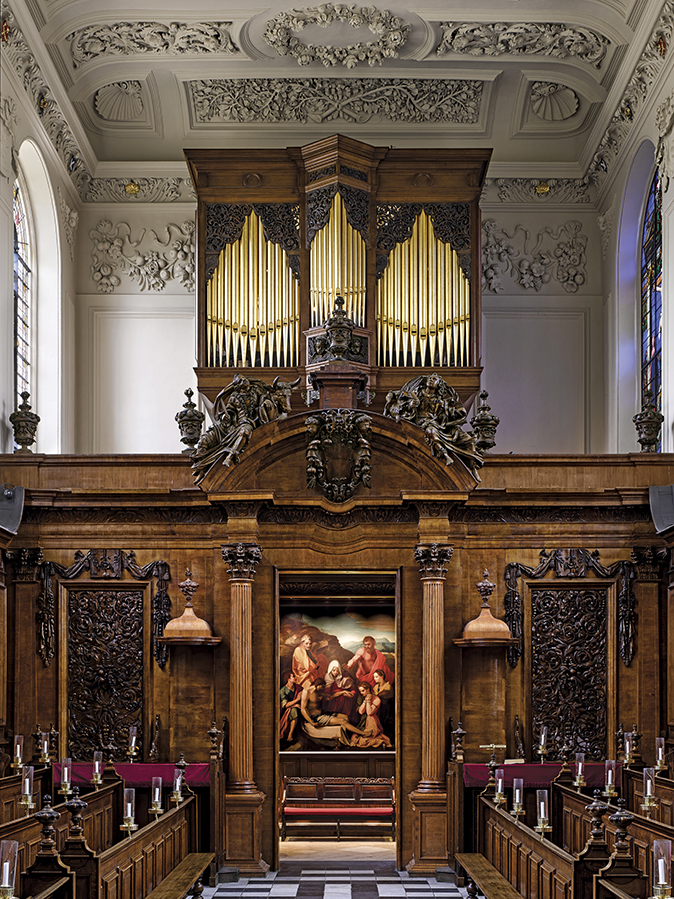
Internally, the chapel followed in the medieval Oxford tradition. It was partitioned with a screen to create a vestibule at one end, the so-called ante-chapel. Running along the sides of the building and returning against this screen are stalls for the members of the college. At the opposite end of the interior is the communion table (explicitly described in the engravings as an ‘altar’), which is enclosed by a rail and set against a framing reredos. To either side of the altar are two wooden cubicles, one enclosing the founder’s alabaster tomb and the other a private pew for the President’s wife. Bathurst had been widowed in 1690, but his wife had claimed a similar seat at Wells, the chantry chapel of Bishop Bekyngton.
Work to the revised joinery of the chapel must have been underway from 1692 and clearly involved numerous different specialists (almost certainly including Grinling Gibbons), many of them working from London. The whole was assembled, however, under the direction of the Oxford joiner Arthur Frogley. On November 9, 1693, probably at the moment of its instalment, he signed a contract agreeing to maintain the furnishings for the next ten years.
On the same day Peisley likewise contracted to lay a marble floor ‘according to the printed design’. After the consecration ceremony, on May 24, 1694, Frogley received the final payment for the enormous sum of £1,140 owed to him for the chapel work.
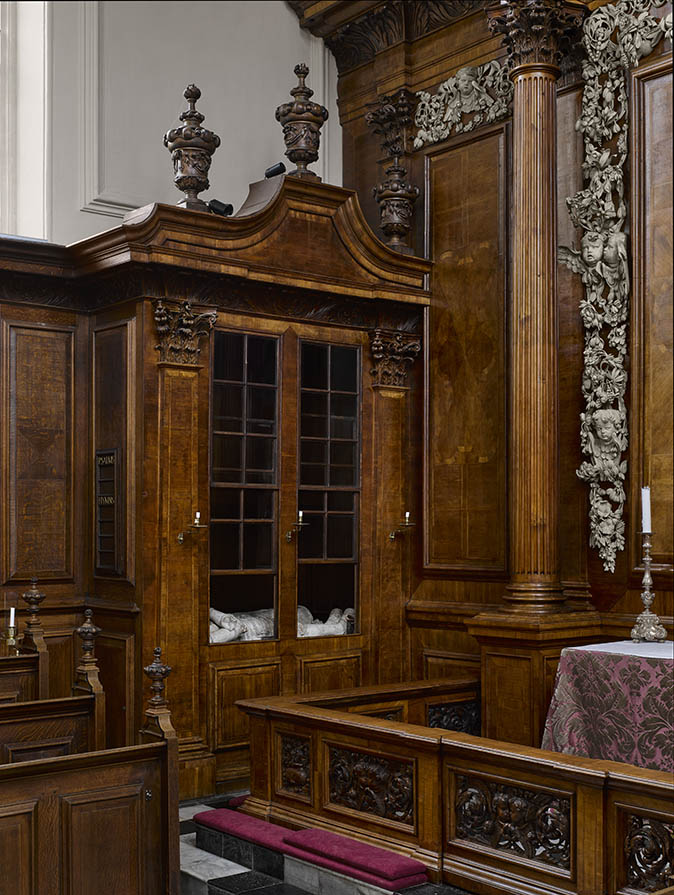
In the three centuries since its completion, wear and tear, cumulative repairs and redecoration have gradually compromised the appearance of Bathurst’s chapel. When a thorough survey of the building in 2010 identified the need for widespread emergency repairs, therefore, it was proposed – where appropriate – to return the chapel and its fittings to their 17th century appearance. This ambitious project has been overseen by the chapel surveyor Martin Hall and the college buildings’ manager Steve Griffiths.
Perhaps the most striking change to the interior has been the conservation of the fittings by Alan Lamb of Swan Farm Studios, Northamptonshire. These have been cleaned of later paint and colouring, returning the original finish of plant resin varnish that was so important to the interior aesthetic. Of particular note is the work to reredos and the screen, including repairs to the exquisite limewood sculpture on the reredos and the repair of sculpture in Bermudan cedar. An old supply of this rare wood, now unavailable, was generously made available by a donor. Griffiths undertook structural repair to the stalls.
Cliveden Conservation repaired the plasterwork, which has been repainted with distemper according to the colours identified by paint scrapes. Such was the fragility of Berchet’s ceiling paintings, assessed by Catherine Hassall, that these simply underwent a surface clean. Similarly, the 19th-century stained glass of the chapel has been cleaned and one window, removed in 1940, restored to its former position. The 1965 organ by Harrison & Harrison, with a case designed by Stephen Dykes Bower, has been restored by Peter Collins Ltd and F. H. Browne and new lighting has been designed by Sutton Vane Associates.
Bathurst died in 1704, 10 years after the consecration of the chapel. The diarist John Evelyn, noted that he was ‘the oldest acquaintance now left me in all the world, at 86 years age, both start blind, deafe and memory lost’. In his will he asked for burial at Garsington outside Oxford, but in the event he was laid to rest in the antechapel at Trinity. An inscription and armorial form a modest grave marker, but the building itself—now restored to a condition that he would recognise – is really his memorial.
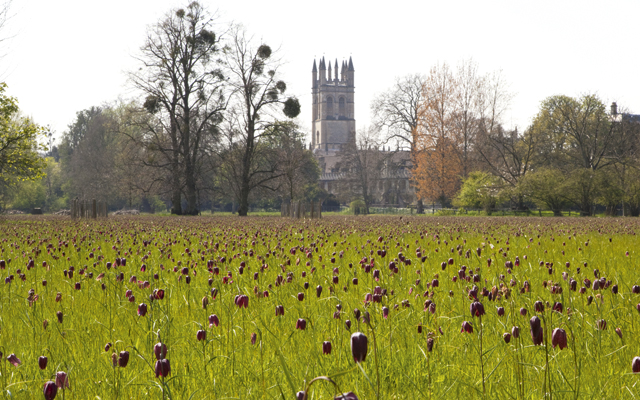
Oxford College Gardens by Tim Richardson
Helena Attlee delights in the opportunity to explore the gardens beyond the gates of Oxford's colleges in this definitive new
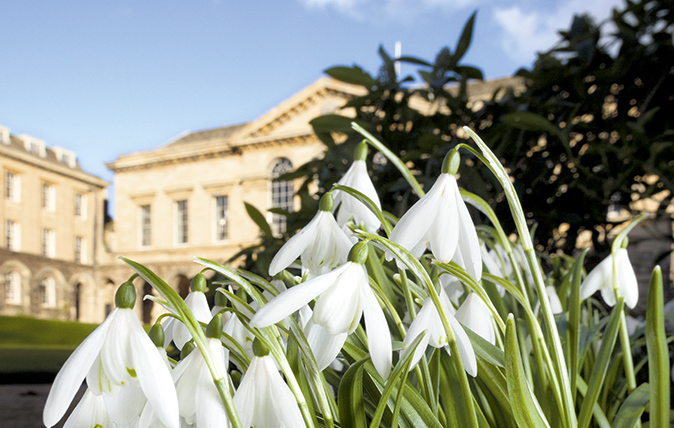
The snowdrops of Oxford: How the city fell in love with winter's most entrancing flowers
The city of Oxford has long been a destination for snowdrop enthusiasts and one of the university’s colleges displays its
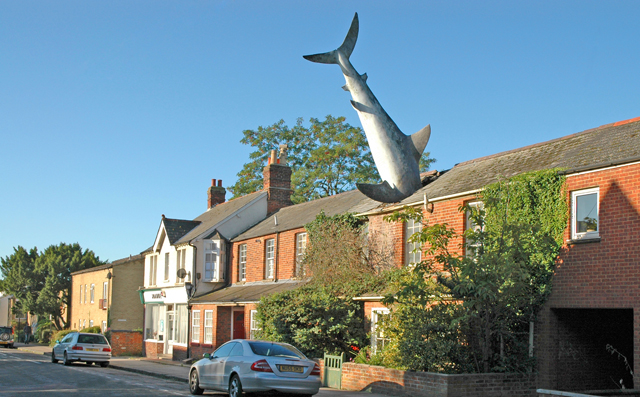
Hidden Oxfordshire: seven attractions you've never heard of
A list of seven of the more unusual, secret and lesser-known sights to visit in Oxford and Oxfordshire.

John spent his childhood in Kenya, Germany, India and Yorkshire before joining Country Life in 2007, via the University of Durham. Known for his irrepressible love of castles and the Frozen soundtrack, and a laugh that lights up the lives of those around him, John also moonlights as a walking encyclopedia and is the author of several books.